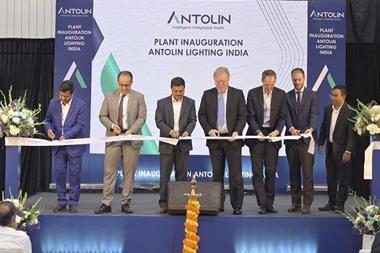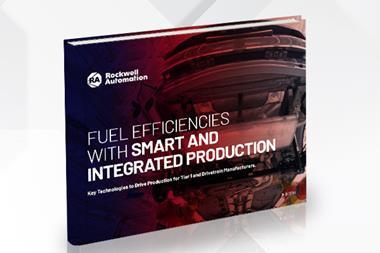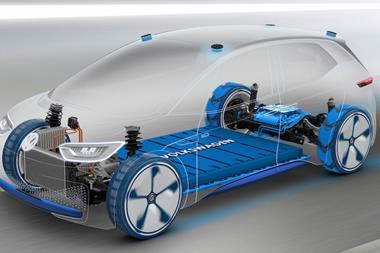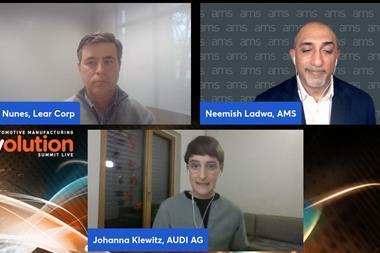The latest technologies, including 3D dirt detection, can significantly improve the efficacy of colour identification in a range of automotive production applications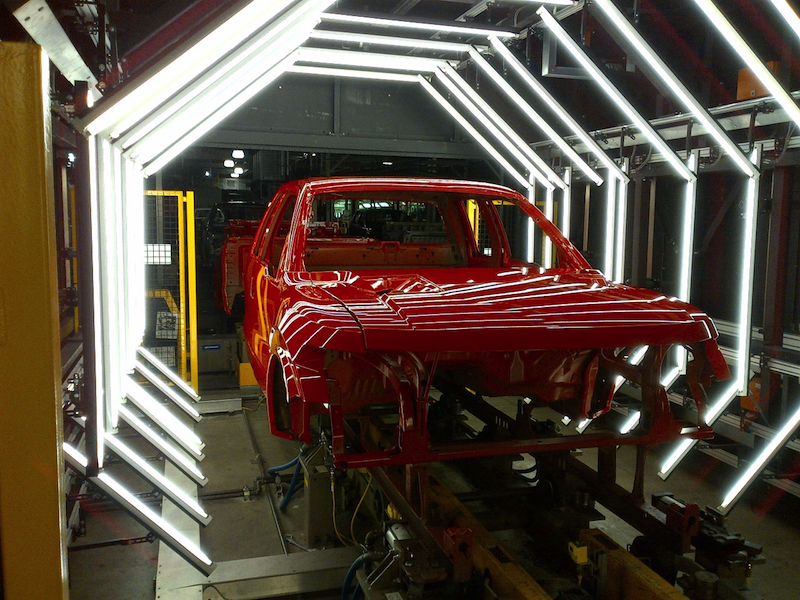
At first glance, colour appears to be a fairly straightforward concept. However, when it comes to checking and measurement, it rapidly becomes a complex entity that demands attention in many different aspects. For example, machine vision specialist Cognex says that many automotive engineers trying to solve inspection and defect detection tasks using colour machine vision fail to consider the effects of temperature variations on the process.
In a colour machine vision application, thermal drift of the image sensor and other electronics within the camera can change the amount of charge contained in each charge-coupled device (CCD). This may affect how colour is perceived by the camera. Intrusive light in the production environment can throw off colour detection and measurements by changing the temperature of the target object. Put simply, as the target object heats up, colour properties can shift. Thus, when colour detection is critical to a machine vision application, a consistent environment must be provided to minimise temperature variations.
Cognex has recently released its Checker 4G7C vision sensor that distinguishes parts by colour. The company says that users simply select the colour to be verified in order to begin inspecting. Checker 4G7C delivers 376 x 240 inspection resolution with Ethernet support for industrial protocols and high-intensity white LED illumination for the inspection and detection of up to 800 parts per minute.
So what are the main applications for colour measurement? Distinguishing seam colours in car interiors is one. Until recently, experts on the assembly line of a well-known German car manufacturer checked these visually. Now, however, Micro-Epsilon's ColorSensor LT-3-HE is used to automate the process. This system operates at a high measurement resolution and is able to discriminate between colours that look virtually the same to the human eye.
ColorSensor LT-3-HE offers a working range of 1-500ßmm and can store up to 31 colours. The device can perform colour, contrast and grey scale detection and is insensitive to outside light, says Micro-Epsilon. Temperature compensation is achieved by a climatic cabinet.
Cable verification

The system differs from many vision systems because it is used interactively by assembly technicians rather than replacing them. The operators present the cables in a particular colour sequence to a precise position on a PCB. Using edge detection, the vision system checks the colour of the cables and tracks their position as they are moved into position. When the bare metal ends of the cables are within 1mm of the soldering position, the system initiates spring-loaded clamps across the grooves to hold them in position.
Once the cables are clamped, the vision system makes a second positional check (since there is some variation in the speed with which operators slide the cables) to confirm that the ends are in the correct location. If they are not, the clamps are released and the process is repeated. The operator cannot move to the next PCB unless the camera shows that everything is in place. [sam_ad id=17 codes='true']
Although colour imaging is a standard machine-vision technique, the cables used in this application are very reflective, which makes differentiating between colours such as red, orange and brown quite challenging. A conventional machine-vision solution would use high-intensity dome illumination, but this is not practical. Therefore, a large, flat illumination system was designed to minimise reflections.
Paint matching
Moving to paint inspection, modern colours, effects and patterns have created headaches for quality control professionals. Fortunately, innovative instrumentation and software packages are available to help, typically via handheld spectrophotometers.
Among the current solutions is the Colortronic 2 spectrophotometer from R-M, a brand of BASF Coatings. This portable device is aimed at high-volume paintshops and measures vehicle colour from several angles. It is connected to a database of over 150,000 colour formulae compiled by R-M from globally sourced matches.
The software searches for the right match from its references and provides the corresponding formula. Colortronic 2 requires no special knowledge of colourimetry; all the operator needs to do is place it on the bodywork, and in a few clicks the colour can be measured and compared, enabling the right formula for the shade to be identified.
Inspecting the finish on a car is not all about colour; these days it can also be about 3D dirt detection.
At Ford’s Dearborn plant in Michigan, the F-Series pick-up is the latest vehicle to benefit from the company’s industry-first dirt detection technology. The system uses high-resolution cameras and reflected light to identify surface imperfections finer than a grain of salt during final vehicle assembly, and to cue operators where to polish and buff out imperfections. In the past, paint and surface inspections were based on visual examination by workers.
By using dirt detection technology, Ford says it has improved paint quality and reduced customer complaints about vehicle surface finish by 82% within 12 months, as measured by warranty data for F-Series models produced at Dearborn.
The 3D imaging system applies varying degrees and angles of light while scoping the paint surface of vehicle bodies to identify dirt in paint and other irregular conditions. Some 3,150 high-resolution images are captured in 15 seconds for every vehicle made. These are stitched together for a full 3D image that is compared digitally with a perfect computer model.
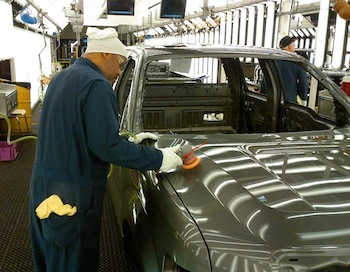
“Before this technology, we relied on operators spending 70% of their time searching the vehicle over, maybe finding something, maybe not, whereas now we have 16 digital eyes running at 15 frames a second. Operators are now able to spend 90% of their time polishing the vehicle and making sure it meets our quality standards.”
Along with Dearborn, the automated dirt detection system is now used at Ford plants in Kentucky, Louisville, Chicago, Oakville, Flat Rock and Kansas City, as well as in Valencia, Spain.





























